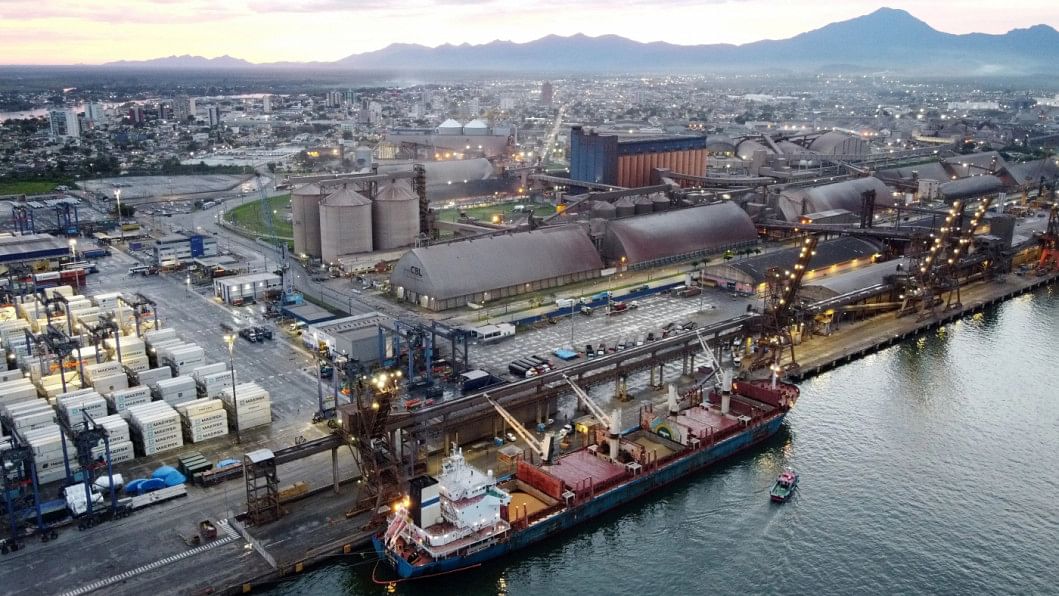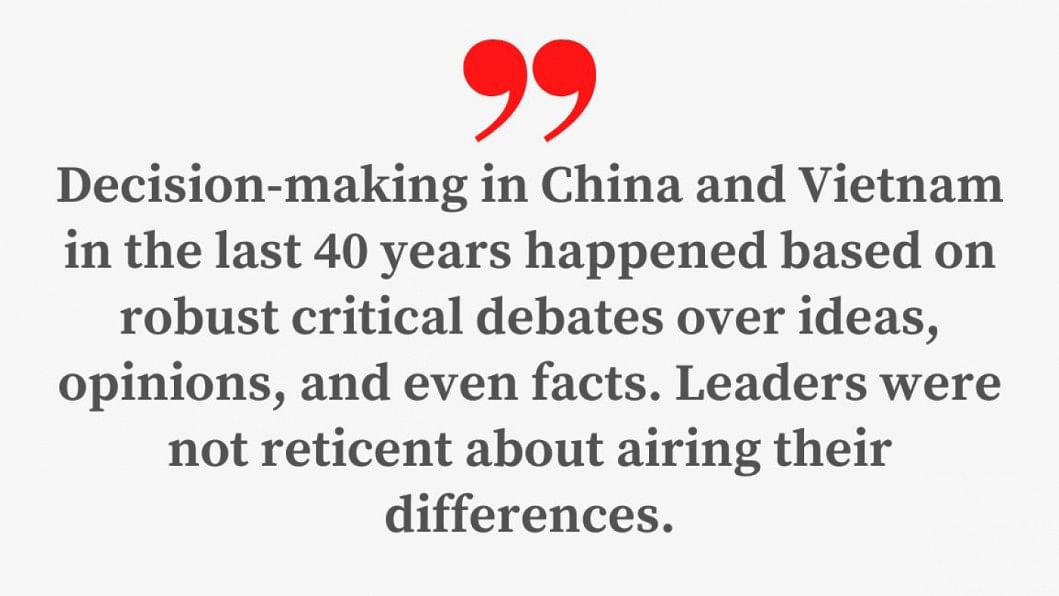How decentralisation helped China and Vietnam grow

The Chinese Communist Party held its 20th National Congress on October 16-22. Nearly 2,300 delegates met at a crucial time when China is at a crossroads. Which path will China take? To continue on the "reforms and opening up" path taken in 1978 under Deng Xiaoping, underpinned by markets and the private sector? Or return to a more party and state-dominated strategy that pushes back markets?
The achievements of pro-market reforms over the past four decades have been stupendous – albeit accompanied by rising inequality. China's economy grew by more than 10 percent annually for more than three decades, lifting more than 700 million people out of extreme poverty. The economy was transformed from a rural and agricultural one to an urban, manufacturing powerhouse. Almost 883 million people or 62 percent of the population now live in cities, compared to 190 million or 19 percent in 1980. A 500-million-strong middle class has emerged, and incomes in the coastal cities are comparable to advanced economies. With around 250 million college graduates, China uses cutting-edge technology in many fields.
The achievements of similar reforms in Vietnam have also been spectacular. The per capita income has increased more than nine times in the last 30 years – thrice that of Bangladesh. At present, Vietnam is one of the most competitive economies in the world, with exports of over USD 300 billion of diversified products – from agro-processing to textiles to electronics. Vietnam's school students perform exceptionally well in international student assessments.
How did these two countries make such progress? Despite a vast literature on this topic, there is widespread misperception that monolithic, centralised rule enabled such progress.
The different reality is that economic reforms and progress of these countries happened because of institutions that provided three ingredients of effective governance: i) vigorous debates and the competition of ideas in decision-making; ii) significant power-sharing across different tiers of government; and iii) these two factors and term limits enabled political competition.
Decision-making in China and Vietnam in the last 40 years happened based on robust critical debates over ideas, opinions, and even facts. Leaders were not reticent about airing their differences. The much-respected and just departed Chinese premier, Li Keqiang, an economist, was famously known to be sceptical about China's GDP growth numbers. He used railway cargo volume, electricity consumption, and loans disbursed by banks to measure trends in economic activity. The Economist magazine later termed it the Li Keqiang index.
Another example of critical thinking I witnessed was when a highly regarded, just-retired minister gave a talk on Vietnam's performance in Washington. Lo and behold, he angrily complained that there was too much praise of Vietnam that overlooked its challenges and problems – which he went on to list.
Both these countries are among the most fiscally decentralised in the world. The East Asian region is among the most decentralised in the world; within it, China and Vietnam are even more decentralised. Subnational governments – in provinces, prefectures, and counties – spend 55-70 percent of all government expenditures, including public investment. Local governments vigorously compete to attract domestic and foreign investment, and help their workers find employment in the more affluent provinces and abroad (in Vietnam's case).

Because they compete, they tend to be experimental and innovative and lead the reforms that have enabled these countries' spectacular success. Let me share some anecdotes. In 2011, at an official dinner in Washington, officials from China's finance ministry explained to me that reforms in China were rarely planned from the beginning as national policies. Instead, reforms started with trial-and-error experiments by some county or provincial governments. Based on the experiment's success, the word spread, and new policies spread spontaneously to other provinces and ultimately adopted by the country. Similarly, when I once asked a visiting minister from Vietnam about the role of decentralised provincial governments, he reacted with evident exasperation that provinces had too much power. Having visited Vietnam's provinces and seen their dynamic locally led development, I understood his impatience, though I disagreed.
Let's turn to history. As is now legend, China's reforms were launched when local party officials of Xiaogang village in the then-impoverished Anhui province decided to experiment. They gave 18 farming households the right to cultivate plots of land on their own and sell their produce after they had met their supply quotas. The news of this successful experiment spread and another province, Sichuan, carried out a similar experiment. In 1979, Deng Xiaoping, China's reform leader, directed other provincial leaders to follow the system. Production boomed. In five years, 24 million households participated in it. Farmers' incomes tripled.
Local governments compete hard to raise agricultural productivity, attract manufacturing investment, and provide jobs for their constituents. As economist Stephen Cheung has written, China's "industrial heartlands of the Pearl and Yangtze deltas reveal the cut-throat competition between localities for business. Local governments compete for capital investment and local officials attend conferences all over China and even abroad to solicit this investment." Local governments offer full cooperation: "You want a business licence? The locality will assign someone to do the walking and talking for you. Want a building permit? They will give you one with money-back guarantees. Unhappy about that dirty creek passing through the site? They may offer to build a small lake for you. They will help you find architects and builders and, at the production phase, recruit workers for a reasonable fee. They sell their cheap electricity, sell their parks and entertainment..."

In Vietnam, similarly, it was local governments that led reforms through "fence-breaking" experiments, sometimes carried out without Hanoi's approval. In the beginning, commune leaders in the north's Haiphong province secretly gave land to farmers on lease to cultivate on their own, using a "sneak contract" that set procurement prices higher than authorised by the national plan. Production increased by six times. Later, the whole province and the whole country adopted these practices. Ho Chi Minh City (HCMC) ultimately became the "reform leader," carrying out bold market reform experiments. During the 1990s, HCMC and a few other cities, such as the now prosperous Da Nang, were authorised to build infrastructure, negotiate, and approve foreign investment projects.
The historically famous example of political competition in China comes from Deng Xiaoping's famous Southern Tour in 1992. At that time, in the wake of the military crackdown in Tiananmen Square, the Communist Party leadership in Beijing had halted Deng's "Reforms and Opening Up" programme. In response, Deng, then retired, went on a "family vacation" – 17 family members in tow – to the newly emerging economic powerhouses – Shenzhen, Guangzhou, and Shanghai – in the south and convinced their leadership to oppose party leadership in Beijing and reinstate reforms. The rest is history.
One crucial leadership reform introduced in 1982 was the two-term limit for the head of the government; Vietnam also introduced a three-term limit. In 2018, however, the Chinese Communist Party removed term limits. By concurrently holding three of the most important positions in the country, power has also been exceptionally concentrated in party leader Xi Jinping's hands.
Chinese scholars such as Prof Zhang Jun, dean of Fudan University's School of Economics, have recently expressed concern that the new centralisation may dampen innovations by local governments that were responsible for much of China's dynamism.
As it is, for several reasons, the Chinese economy is slowing down and expected to be about three percent or even less this year, lower than the rest of East Asia for the first time in 30 years. Growth is not an abstract number – it employs millions and the stakes are high.
Furthermore, the rules-based international system is now fraying with potentially calamitous implications. Critical discussions, wise counsel and, as necessary, path correction will be needed in all the countries, especially in major powers such as China.
China's and Vietnam's successfully tested collective leadership has provided wise counsel, checks and balances, and what modern parlance calls "executive restraint." That is what enabled their spectacular development in the past four decades. There are vitally important lessons here for all developing countries, including electoral democracies.
(This column draws on a previously published article in PRI's Policy Insights.)
Dr Ahmad Ahsan is the director of the Policy Research Institute (PRI) of Bangladesh and a former World Bank economist and Dhaka University faculty member. Views expressed in this article are the author's own.

 For all latest news, follow The Daily Star's Google News channel.
For all latest news, follow The Daily Star's Google News channel. 











Comments